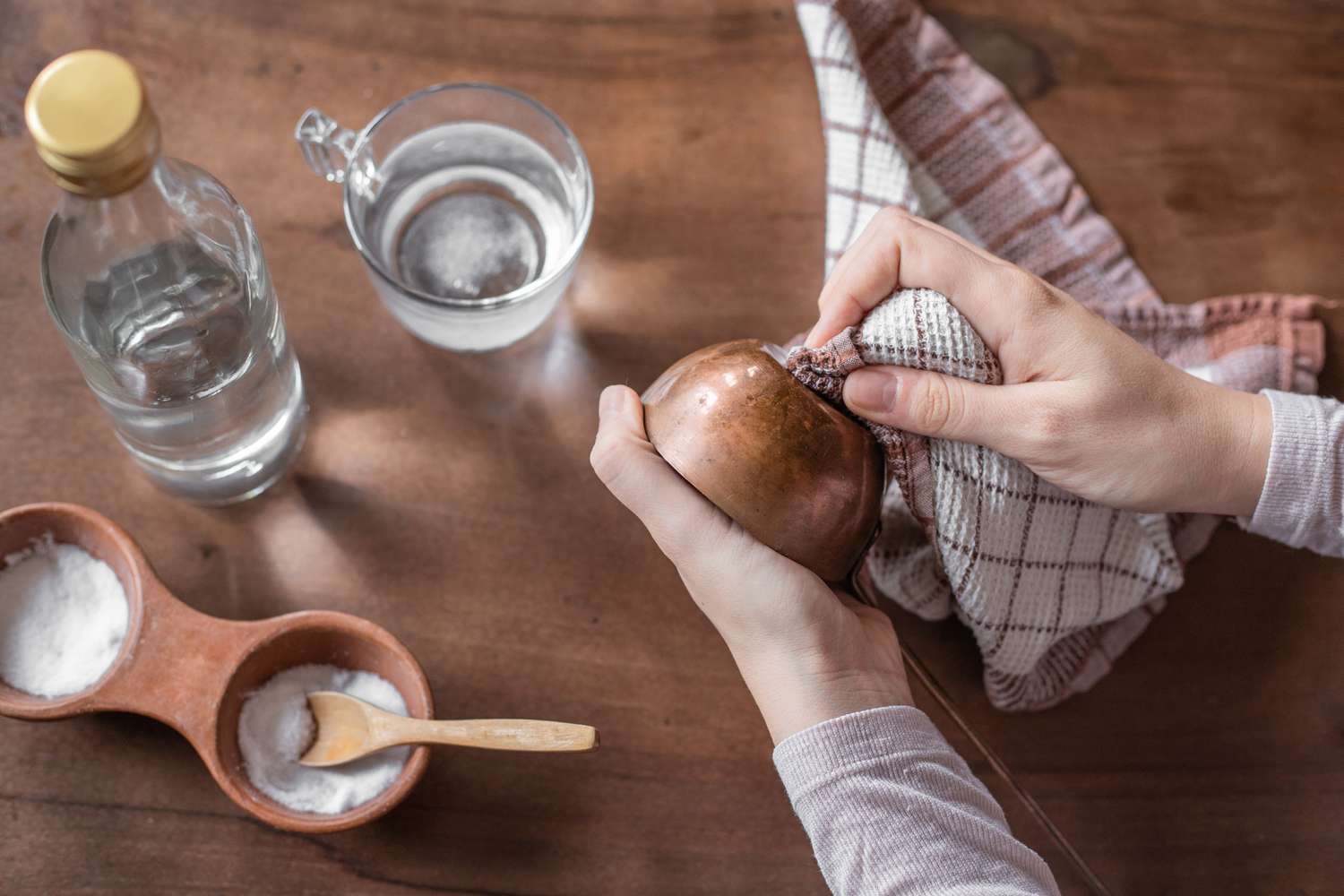If you collect coins or simply love seeing your spare change sparkle, learning how to clean copper and zinc pennies safely is a valuable skill. Over time, pennies can lose their luster due to oxidation, dirt, and exposure to air. Luckily, you can restore their shine easily using common household items such as vinegar, baking soda, ketchup, and even Coca-Cola. This guide explains the safest and most effective ways to clean both copper pennies (minted before 1982) and zinc pennies (minted after 1982) without damaging them.
Important Note: If you suspect your penny may have collector or historical value, avoid cleaning it until you consult an appraiser. Cleaning collectible coins can reduce their value or cause irreversible damage.
Things You Should Know Before Cleaning Pennies
-
For Copper Pennies (Pre-1982): Soak them in a mixture of white vinegar and salt for 10–15 minutes, then rinse thoroughly. Alternatively, try ketchup for 5 minutes or Coca-Cola for 4–5 hours.
-
For Zinc Pennies (Post-1982): Rub gently with an eraser or a paste made from baking soda and water to remove grime and restore shine.
-
Avoid Acids on Zinc: Acidic cleaners such as vinegar can cause zinc pennies to blacken. Always use gentle, non-acidic methods for newer coins.
1. Cleaning Pennies with Vinegar and Salt
Step 1: Prepare the Cleaning Solution
Mix 1 teaspoon (5 g) of salt with ¼ cup (59 mL) of white vinegar in a non-metal bowl. Stir until the salt dissolves completely. Use enough vinegar to submerge all the pennies in a single layer. If you don’t have vinegar, lemon juice is an effective alternative because both contain mild acids that dissolve copper oxide — the dark coating that makes pennies look dull.
Warning: Never use this method on post-1982 pennies with scratches, as the acid can react with the zinc core and cause black spots.
Step 2: Soak the Pennies
Place the pennies in the vinegar solution for 10–15 minutes. Make sure they don’t overlap so the cleaner can reach every surface. For extra dirty coins, gently scrub them with a soft toothbrush halfway through the soak.
Step 3: Rinse and Dry
Remove the pennies and rinse under running water. This step is essential because leaving vinegar residue can create a greenish film (malachite) as the copper reacts with air. After rinsing, lay the coins on a soft cloth or paper towel and let them air dry for about five minutes.
Tip: For a fun science experiment, rinse half of your pennies and leave the others unrinsed. Compare how their colors change over time.
2. Cleaning Pennies with Ketchup
Step 1: Add Ketchup to a Small Cup
Squeeze enough ketchup into a small cup or bowl to fully cover your pennies. Any brand will work, but those with higher vinegar or citric acid content are more effective. You can also use hot sauce or Tabasco, though these might leave an orange tint.
Step 2: Submerge and Wait
Drop the pennies into the ketchup and let them sit for about 5 minutes. For dirtier coins, leave them in a bit longer. Swirl the cup or use a toothbrush to spread the ketchup evenly across the surface.
Step 3: Rinse Clean
Rinse each penny under warm running water until all the ketchup is gone. If they are clean but not shiny, make a baking soda paste (baking soda and water), rub it gently onto each penny, and rinse again.
Warning: Do not use ketchup on zinc pennies minted after 1982, as the acid can cause discoloration.
3. Cleaning Pennies with Coca-Cola or Dark Soda
Step 1: Prepare the Soda Bath
Place your pennies in a shallow dish in a single layer and pour enough Coca-Cola (or any dark soda) to cover them completely. The phosphoric acid in these drinks dissolves tarnish and oxidation from copper surfaces.
Step 2: Let Them Soak
Leave the pennies to soak for 4–5 hours or overnight for deeper cleaning. Flip them halfway through so both sides are cleaned evenly.
Step 3: Rinse and Dry
Remove the pennies and rinse thoroughly under running water. Do not drink the used soda — it contains traces of copper and zinc. If the coins still look dull, repeat the process for a few more hours.
4. Cleaning Pennies with Baking Soda or Scouring Powder
Step 1: Create a Cleaning Paste
In a small bowl, combine ¼ cup (68 g) of baking soda or scouring powder (such as Bar Keepers Friend or Bon Ami) with a few tablespoons of water. Stir until it forms a thick paste.
Step 2: Rub the Penny
Wet each penny and rub the paste onto it using your fingers or a soft toothbrush. Scrub gently for about 30–60 seconds per side to remove oxidation and grime. Wear gloves to protect your skin from abrasion or chemicals.
Step 3: Rinse and Polish
Rinse thoroughly under clean water, then dry each coin with a microfiber or polishing cloth. This method restores a bright, coppery glow and works best for small batches of coins.
Caution: Always test on a low-value penny first, especially if using scouring powder on zinc coins, as it may cause discoloration.
5. Cleaning Pennies with an Eraser
Step 1: Get an Eraser and a Dirty Penny
Grab a soft block eraser, pencil eraser, or electric eraser. This technique uses friction instead of chemicals, making it safe for both copper and zinc coins.
Step 2: Erase the Dirt Away
Rub the penny the same way you would erase a pencil mark. The grime and oxidation will lift off, revealing a shiny surface.
Step 3: Repeat on the Other Side
Flip the penny and repeat the process. Each side usually takes about 10 seconds. Although this method requires a bit of effort, it’s safe, quick, and ideal for collectors who want to avoid using acids or liquids.
6. Cleaning Pennies with Dish Soap and Water
Step 1: Make a Soapy Solution
Mix clean water and a few drops of mild dish soap in a small bowl. Distilled water is best if your tap water is hard or mineral-rich.
Step 2: Soak the Pennies
Place the coins in the soapy mixture and let them soak for several hours or overnight. During soaking, gently rub them with your fingers or a soft brush to help loosen dirt.
Step 3: Rinse and Restore Shine
Rinse the pennies under running water and dry them completely. If they appear clean but dull, polish them with a baking soda paste to bring back their natural shine.
Final Tips for Cleaning Pennies Safely
-
Always handle coins gently and avoid using hard brushes or metal tools.
-
Never mix cleaning methods or chemicals — this may cause unpredictable reactions.
-
Store clean pennies in dry, airtight containers to prevent future tarnish.
-
Remember: The goal is to clean, not alter. Avoid over-polishing or scraping.
By following these safe, proven methods, you can easily restore your copper and zinc pennies to their natural brilliance using everyday household materials.



